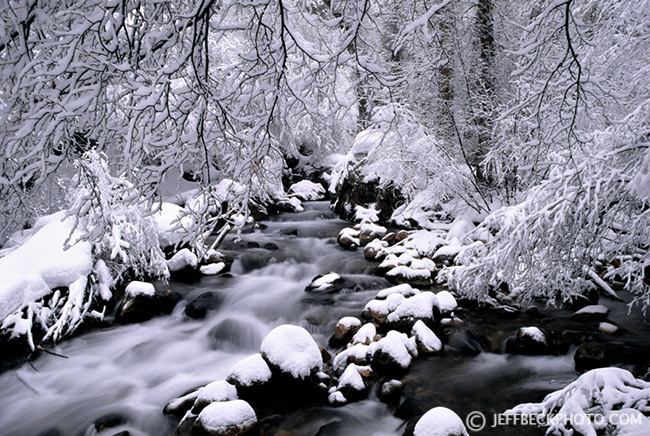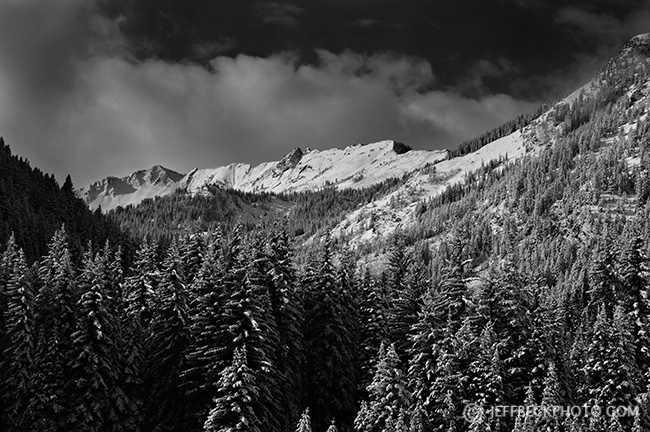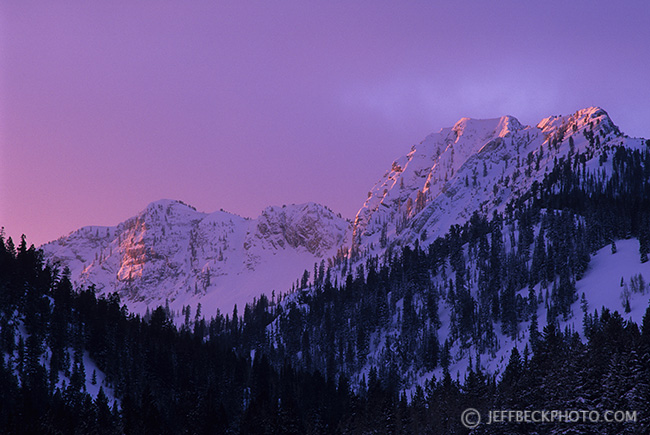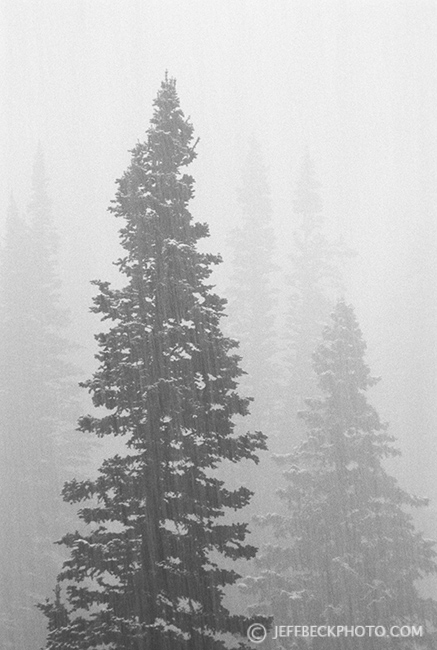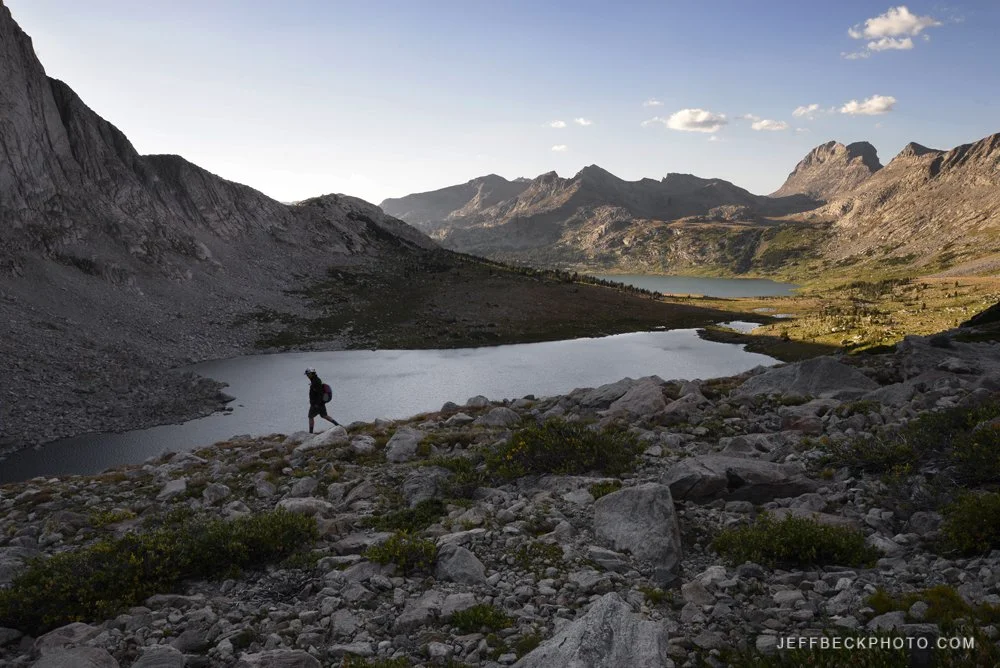Wilderness 50
Sunset, Upper Red Pine Lake, Lone Peak Wilderness, Utah
I'm honored to be one of 50 photographers chosen to be part of the Wilderness 50 Exhibit which opened September 3rd at the Natural History Museum of Utah on the 50th anniversary of the Wilderness Act. 50 photographs by 50 photographers were chosen from over fourteen hundred photographs submitted by four judges; Tom Till, James Kay, Stephen Trimble, and Rosalie Winard. The show is a commemoration of the signing of the Wilderness Act as well as a celebration of the beauty and diversity of Utah's wildlands, and runs thru December 14th in the Sky Gallery on the museum's top floor.
Contemplating Time
Tree Skeleton and Crescent Moon, Twin Peaks Wilderness, Utah
I’d long been drawn to this tree and photographed it on more than a few occasions before making this image. The shape of this dead tree arrests my eye every time I hike in the vicinity of Lake Blanche. On this night it was like a beacon.
Situated north of Lake Blanche, on the edge of a large block of resistant stone forming the terrace into which lakes Lillian, Florence, and Blanche are carved, among polished ribs of rock, the setting is perfect for capturing this dead tree cleanly against the western sky. On this night, two nights after the new moon, a waxing crescent moon was setting into a clear electric blue twilight and lining up quite nicely with the tree.
I had just left Lake Blanche where I had stayed till sunset’s bitter end, when the landscape could only be photographed in silhouette. I started towards the trailhead and was almost immediately stopped. The scene materializing before me reminded me of an image in my mind of a lone sculpted tree set against a crescent moon.
I dropped my pack, and worked quickly to set up my tripod. I changed lenses, from the wide angle I’d been working with, to a telephoto lens. Next, I dialed in my exposure, knowing that I needed to keep my shutter speed to one second or less in order to avoid blur from celestial movement. I had almost no time to spare as the light in the sky was quickly dying. I made several exposures while fine-tuning my composition by physically moving my camera position.
As I made my way down to the trailhead in the dark, I wondered how many hundreds of years it took this tree to reach such stately proportions. This once mighty tree has left behind a monument with extraordinary character, a visual legacy of its noble life.
This monument is a marker of time somewhat closer to mind than the lives of mountains or moons, and when set against the Earth’s cosmic timepiece, endlessly marking days, a deeper layer of meaning is achieved. The two symbols together move the image toward the iconic, the archetypal.
Scanning 35mm Film
As I’ve been working on the new website, I realized that some of my older film scans were not migrated to newer hard drives. When I first started scanning my film, I made the mistake of scanning a lot of images at smaller sizes because I was trying to save hard drive space, and I didn’t want to clutter up my drives with full size images (100+MB) that weren’t ultimately going to be printed large.
Today, my hard drives are full of images that will never even be proofed - because they’re not good enough. With digital storage costing less than ever, it only makes sense to scan film at the highest possible resolution, creating a master image file that is sized down for proofing, instead of scanning a proof size file and rescanning if a larger file is desired, which is what I used to do.
So, rather than trying to retrieve the digital versions, I’ve been rescanning some of my 35mm slides. Images from my previous website galleries; praiseworthy images that slipped through the cracks because they're not core portfolio images. I’ve also been scanning some images that had never been transferred to digital. This has made me realize a few things.
First, I need to be more diligent with the organization and updating of my digital image library. Not migrating digital content to new media or new technology could have catastrophic consequences when there’s no hard copy original to fall back on.
Second, I have a huge collection of images on film that have rarely if ever been seen. Images that were once projected in slide shows, but have never existed in digital form, yet still deserve some attention. I need to resume scanning my best chromes, something I stopped doing once I became firmly established in my digital workflow.
Third, I should offer my services to people who want to give new life to images on film. I could put my Nikon Coolscan to work. So, if you have precious images on 35mm film (slide or negative) that you’d like to convert to jpeg and tiff, contact me to find out how.
Lizard Head, Wind River Range
With any image I present here, there are a wide variety of topics I could potentially explore. Sometimes I find it overwhelming to pick an angle to write about, and usually what I do write is not necessarily what I had initially intended to write. I’m guessing that writing is a lot like photography in that masterpieces are produced in the context of practice and dedication, not purely inspiration.
Ultimately, it’s what you do with that inspiration that matters. I know with photography, practice makes it possible to express yourself more clearly and more powerfully. I’m sure that’s true with writing as well. So, it probably doesn’t matter what I write about so long as I keep writing.
When I was thinking about what to write about this image my first instinct was to explain how a color version of this image was on my old website, in my Western Wilderness Gallery, and how I cut it from my new Mountain Landscapes Gallery, but then once I converted it to black and white, I thought it was even more striking and definitely belonged on the new website. And then, I thought about writing about how I used Photoshop Image>Calculations to convert the color image to black and white and the technique I used to dodge and burn the final image to deliver more impact…boring.
What would probably be a more interesting topic is how it felt to be in this spot. After two days of hiking, to be taking in this view, at more than 12,000 feet high, deep in Wyoming’s Wind River Range, felt amazing. Staring down a knife edge ridge towards Lizard Head Peak, in the Popo Agie Wilderness, with the Cirque of the Towers over my right shoulder, a great friend and hiking companion nearby, clouds swirling around us and the light changing by the minute, this was definitely a moment to savor.











